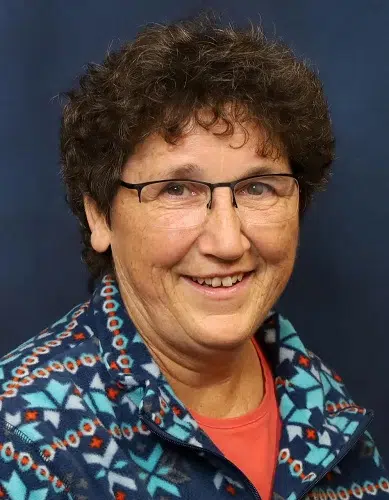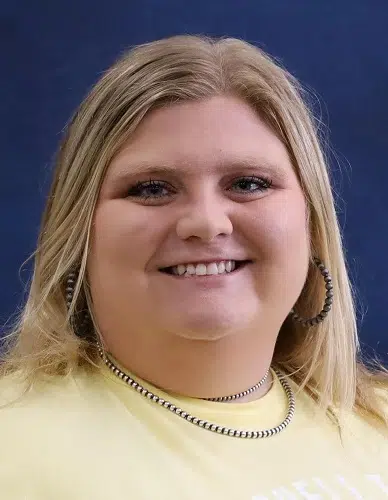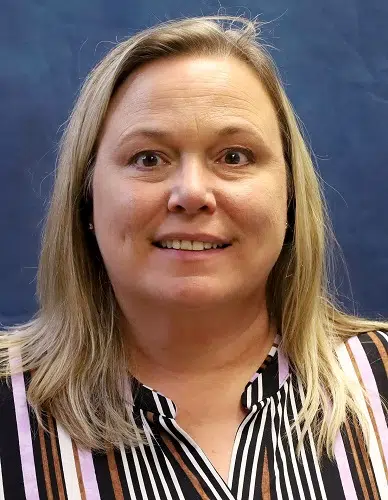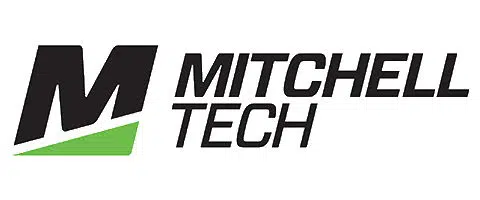For the first time in several years, the South Dakota Center for Farm and Ranch Management is actively seeking new students, thanks to an expansion of the program by Mitchell Technical College.
“This year, in response to a single vacancy to replace a retired instructor, we have the unique opportunity to hire two qualified individuals whom we are confident will both enhance what we currently offer and help us broaden our coverage regionally,” said Blaine Carey, director of the program.
This summer, Nicole Tonak and Keah Munsen joined Carey in working directly with agricultural producers. Former Program Director Lori Tonak worked with the program for eight years before retiring in 2021. Shortly after her retirement, she returned to the program as a consultant.
“When Lori said she was going to retire last year, we advertised and just didn’t find quite the right fit at the time. This time around, we were fortunate to have two excellent candidates with diversified experiences come forward,” he said. “Knowing the high demand for the program, we thought it was a good opportunity to expand and strengthen it with two very capable instructors.”
Carey said the additional instructor will allow the program to provide farm and ranch management instruction to benefit an additional 40 operations statewide.
Nicole Tonak earned her associate degree in Office Operations at Lake Area Technical Institute in 1990. She has worked as a farm market advisor for Cargill, and as a farm market advisor/broker for both Wedbush Securities and Farmers Business Network. She hails from Willow Lake and will primarily work with farmers and ranchers in the northeastern region of South Dakota.
Munsen graduated from Dickinson (N.D.) State University this spring, with a Bachelor’s degree in Agricultural Studies and double options in Range Management and Ranch Management and a minor in Agri-Business. She will be based out of Mitchell and work mostly with producers in southeast and central South Dakota.
For now, Lori Tonak will continue to work with the producers she has advised in the past while the new instructors acclimate to their new roles and work to incorporate new operations into the program.
In order to support the expansion, Mitchell Tech sought the support of industry leaders whose clients have been positively impacted by their participation in the program.
“We knew that we needed the instructors before we could grow the program,” Carey said, adding that, having two qualified individuals ready to jump into the program simultaneously wasn’t likely to happen again soon. So, knowing that the need for sound financial advising for producers is high, administration at the school agreed to move forward.
In a letter requesting financial support from industry partners, he wrote, “Our experience shows that it takes three years to add the necessary number of new program participants to sustain the cost of adding a dedicated Farm and Ranch Management instructor. In order to keep participation in the program affordable, we hope to avoid passing these additional operating costs on to program participants.”
The idea has been widely accepted, according to Carey. So far, six industry partners have committed as much as $10,000 annually for three years to support the third instructor’s salary and benefits.
“This commitment reiterates the value South Dakota’s bankers and agricultural organizations place on the financial sustainability of individual farming operations. They know the impact that the sustainability of individual operations has on their futures, as well as that of the ag industry statewide,” Carey said, as well as their confidence in the Farm/Ranch Management program. “We are confident that these contributions toward the financial livelihood of South Dakota farmers and ranchers will create a positive return on investment for generations.”
Carey said the program is expected to be self-supporting by Fall 2026 – a timeline he says is more than attainable.
“For years, we’ve struggled to accept new producers into the program, because we didn’t have the capacity to serve them,” he said.
“Students” – Carey explains that could be one person or a whole family engaged in farming and ranching duties – meet with instructors at their operations throughout the year, with a majority of the instruction time devoted to helping producers develop a better recordkeeping system. Operations enrolled in the program pay tuition twice annually on a semester schedule, and coursework generally lasts six semesters – or three years. Some of the program’s first participants, who were included in the 1985 year-end report, continue to consult with instructors on their year-end finances.
“During that time, we assist ag producers in compiling accurate financial data, then help them analyze that information,” Carey explained, adding that the program covers a wide range of topics, including goal-setting, cash flows, balance sheets, income statements, risk management and enterprise analysis. “At the end of the program, producers have a more thorough understanding of the financial aspect of their operations and are able to make better decisions for the future.”
A main goal of the program is to pinpoint the operations’ cash flows, both into and out of the farm or ranch.
“With very tight margins to be made on agricultural products, having an up-to-date financial picture throughout the year can help with management decisions,” Carey said.
“Tracking a farm’s trends over a period of years helps to determine profitability and ensures that the operation will be profitable when the next generation is ready to take over. There’s a misconception out there that we only work with farms that are struggling, but that’s not the case. You can see that in the cumulative numbers that we report on all of our farms at the end of each year.”
Farmers and ranchers interested in learning more about the program can contact Mitchell Tech’s Admissions office at (605) 995-3025, or visit mitchelltech.edu/SDCFRM.

Lori Tonak.
Courtesy photo.

Blaine Carey.
Courtesy photo.

Keah Munsen.
Courtesy photo.

Nicole Tonak.
Courtesy photo.









Comments